Framlingham Castle, Suffolk: A Tudor Stronghold
To stand in the centre of Framlingham Castle, surrounded by its nearly 900-year-old walls, is to stand in the place where a renewed Catholic era dawned over England. For it was here, in July 1553, that the Lady Mary learnt that she had been accepted as rightful queen, following the death of her younger brother, Edward VI, some two weeks previously. Mary’s long road of rejection and struggle appeared to be finally at an end, and as a visitor, that moment of relief still feels palpable, as if it has been imprinted in the fabric of the castle walls.
If you want to get up close and personal to a defining moment in Tudor history, then a trip to Framlingham should definitely feature on one of your travels.
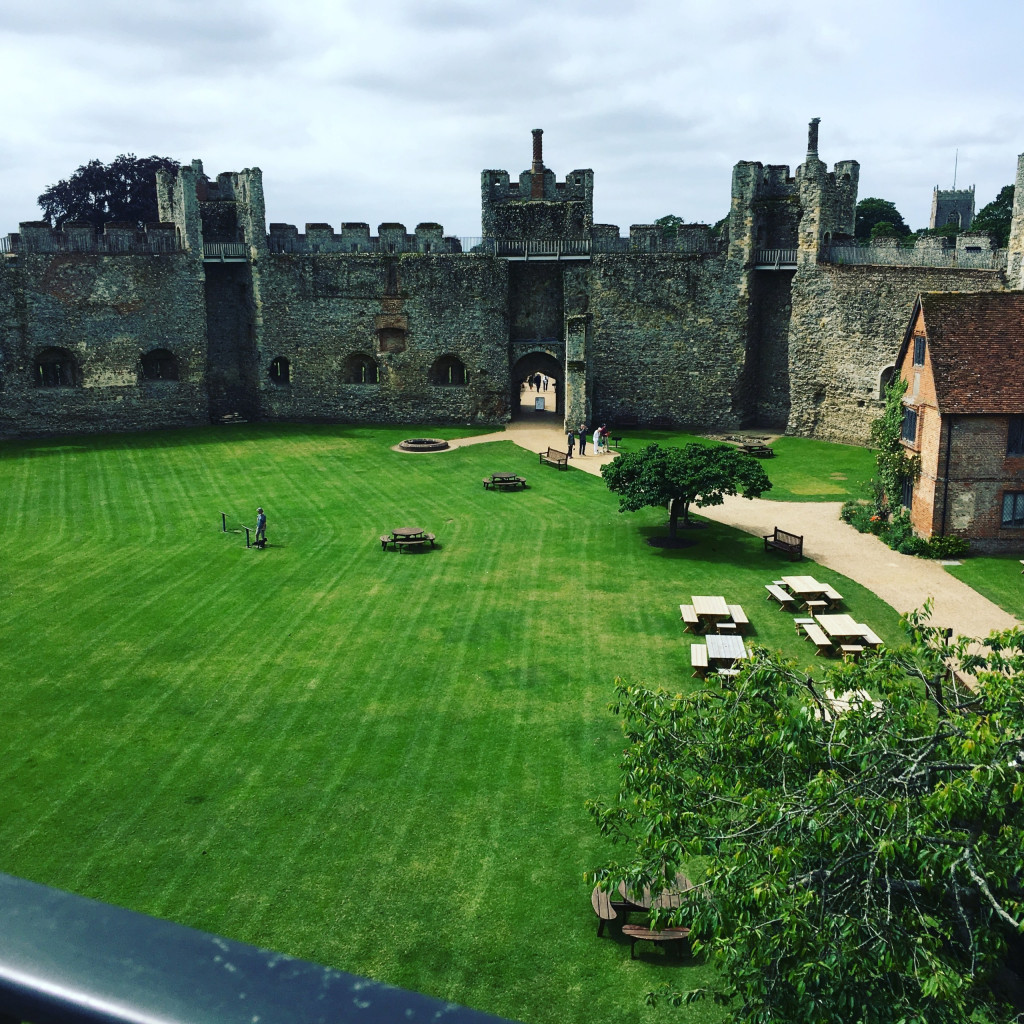
A Short History of the Castle
Framlingham Castle was built by the Bigod family in the twelfth century, with the present masonry curtain walls and towers replacing an earlier castle on the site, thought to have been built c.1100. Roger Bigod, a Norman, had come over to England with William the Conqueror and served him faithfully as Sheriff of Norfolk. Although not a noble, he was rewarded for his loyalty, including being granted the manor of Framlingham. However, it was Roger’s grandson who built the current castle towards the end of the twelfth century.
To cut quite a convoluted story short, the castle passed back and forth between private ownership and the Crown until 1397, when Thomas Mowbray was made Duke of Norfolk. The title of ‘Duke of Norfolk’ then passed to the Howard family by marriage, John Howard becoming the first ‘Howard’ to hold the title. It is he who is thought to have carried out extensive repairs to, and a great deal of refurbishment around, the castle site. He was killed though in 1485, at the Battle of Bosworth Field, whilst leading the Yorkist cause under his sovereign, Richard III.
His son, another Thomas Howard, (eventually) the 2nd Duke of Norfolk, (father to Elizabeth Howard, Anne Boleyn’s mother) is thought to have undertaken much of the Tudor refurbishment of the castle. This included the remodelling of the gatehouse, whose doors are authentic to the period, (dendrochronology having shown that the timber was most likely felled in the period AD 1496–1528) and the addition of the red-brick chimneys, so iconic of the Tudor period. These survive to this day. Thomas died at Framlingham Castle in 1524 at the ripe old age of 80. He was buried at nearby Thetford Priory following a lavish funeral. One wonders whether the likes of Elizabeth Boleyn, whose family were on the rise at that time, attended her father’s funeral.

After the second duke’s death, his son, also Thomas, retained Framlingham but lived at newly-built Kenningham Hall in Norfolk. He narrowly avoided execution in the dying days of Henry VIII’s reign, although the Howard title and lands were surrendered to the Crown. Hence in 1552, Mary Tudor was able to inherit Framlingham, having been granted the Howard estates in East Anglia.
Following the death of Edward VI on 6th July 1553, Mary got wind that the call to London by Northumberland and the Regency Council was a plot to seize her and thereby ensure that Mary would not be able to rally the country to declare in her favour. Whilst the protestant Lady Jane Grey was declared queen, the Lady Mary fled to her estates in Suffolk, eventually arriving at the stronghold of Framlingham on 12th July.
By the time Mary reached Framlingham, she had about 15,000 men in her retinue, with numbers increasing daily, boosted by ‘innumerable small companies of the common people’ (Wriothesley’s Chronicle). When Northumberland’s campaign floundered and ended with his surrender, the Earl of Arundel and Lord Paget ‘rode in post’ to the queen, taking with them 30 horses (Wriothesley’s Chronicle). They arrived on Thursday 20th July, and on bended knee informed Mary that she had been proclaimed queen in London. By the will of the people, conflict was avoided. Mary Tudor, Queen of England, left Framlingham in triumph on Monday 24th July, travelling to London to be crowned on 1st October 1553.
Framlingham Castle: Then and Now
In order for you to get the most out of your visit, we need to imagine how Framlingham Castle appeared in the sixteenth century. Let’s take a tour!
As you walk across the bridge and through its mighty wooden gates, you are entering the inner bailey or courtyard. In the sixteenth century, this entire courtyard would have been surrounded by buildings. Those closest to you on the left and right were largely single-storey service buildings, with the main, high-status buildings surrounding the distant half of the courtyard, ahead of you. Of these high-status buildings, the great hall was on the left. Now, the old ‘Poor House’, built in 1729, stands in its place but incorporates some of the fabric of the old, medieval hall.
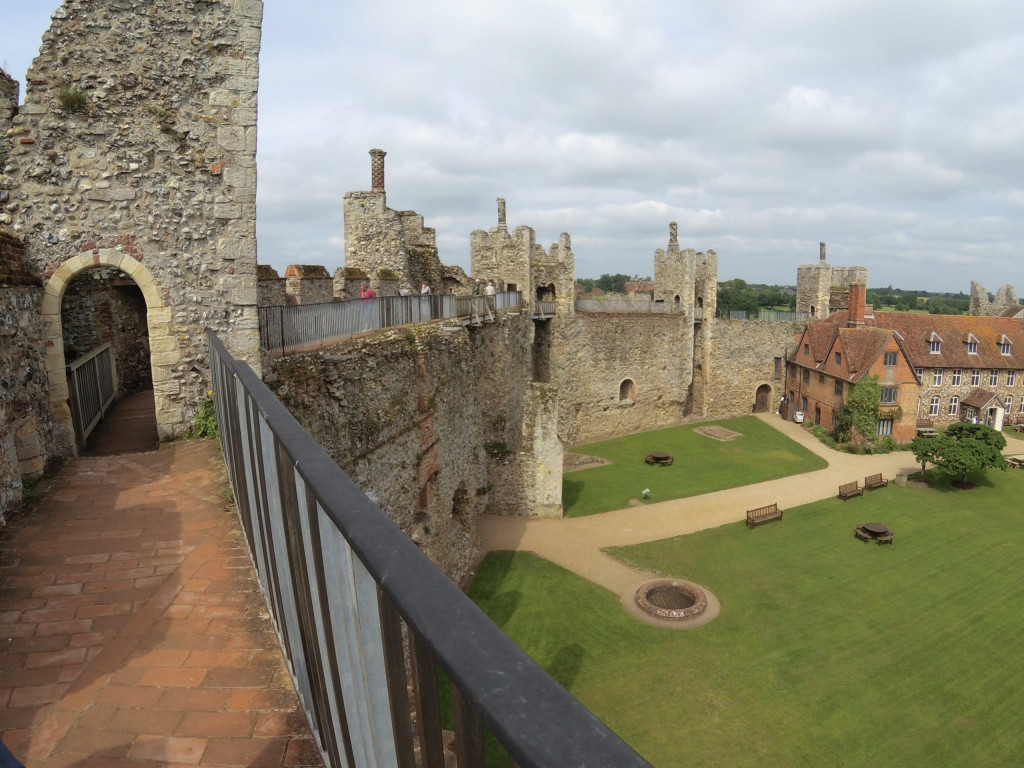
Running at right angles from the far end of the hall (you can still see the ragged end of the small wing projecting out at the end of the building in the photo above), a two-storey range ran right across the top end of the courtyard, connecting the hall with the Chamber Block on the opposite side of the castle; this latter structure comprised the private lodgings of the lord and his family. If the same arrangement of chambers applied here at Framlingham as any other major house of its day, this connecting range probably contained the other public chambers of the household, including a watching and presence-chamber, where receptions and ceremonies would have taken place. This range is now entirely lost, and so little seems to be known about the rooms contained therein.
However, more is known about the Chamber Block, as some of its structural features have been left imprinted into the walls of the castle. Thomas Howard, the 2nd Duke, seems to have been mainly responsible for upgrading the medieval building to a more fashionable Tudor residence. Built of stone, according to OCR (part of English Heritage Education), the two-storey Chamber Block had:
‘grand windows [which] were knocked out on each side and new floors inserted. The joists for these later floors are still visible in the interior wall. In addition, the chamber block was refurbished in brick and further windows were cut through the curtain wall. A window was opened up to create a door that led out to a bridge beyond, allowing access to the private garden in the bailey. The chimneys from the chamber block were extended with Tudor brick. These two chimneys, and the one in the Tudor room above, served fireplaces beneath them.’
Of course, it would have been in these rooms that Mary Tudor spent an anxious few days, awaiting news from London, and those other towns across England which, as time passed, gradually began to declare in her favour.
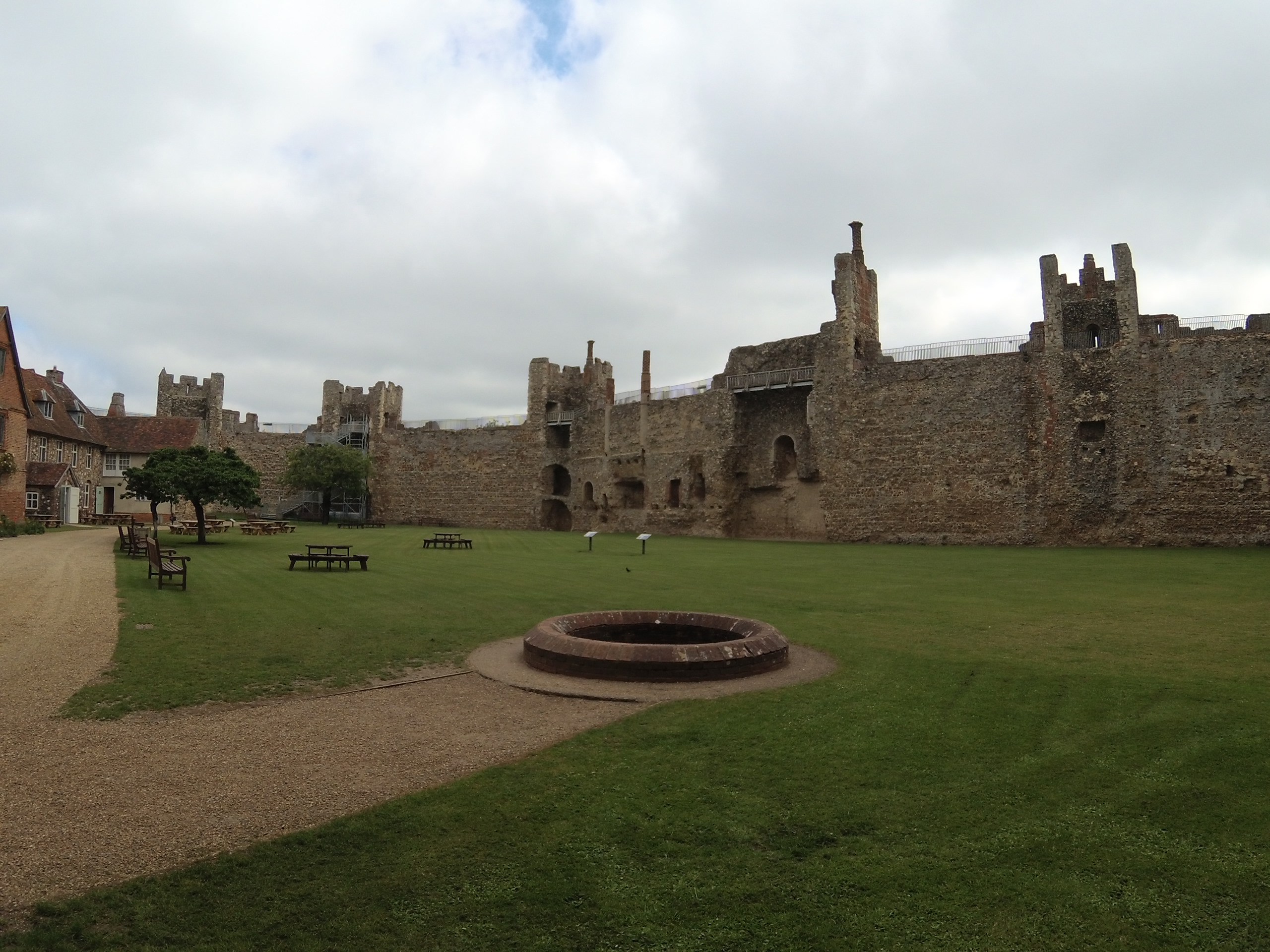
The chapel adjoined the Chamber Block, sitting at right angles to it on a conventional east-west axis. Today you can make out its high east window, still built into the castle’s curtain wall. Imagine the altar below it. It is said that upon hearing of her proclamation as queen, Mary led her household to Mass where a celebratory Te Deum was sung. If this was the case, then you can go and stand there and imagine the new queen, finally delivered by God, to inherit her birth-right and more importantly to begin the restoration of the ‘true faith’, the Catholic faith, back into England.
You will want to explore the ramparts and view the castle from every angle. Don’t miss the pillars that once supported a bridge that led from the Chamber Block across into a fine Tudor garden laid out with herbs, fruit trees and fountains, the walls remodelled to allow guests to stroll down to the water’s edge.
Framlingham Castle is a giant in Tudor history, both in terms of size and of the significance of the events which unfolded there around 450 years ago. It is a place to soak up the history. So, if you are visiting the area, make sure it is on your itinerary and also look out for our top tips below.
Now you have read the article, why not see it in real-time? Click on the image below to watch my video on my YouTube channel!
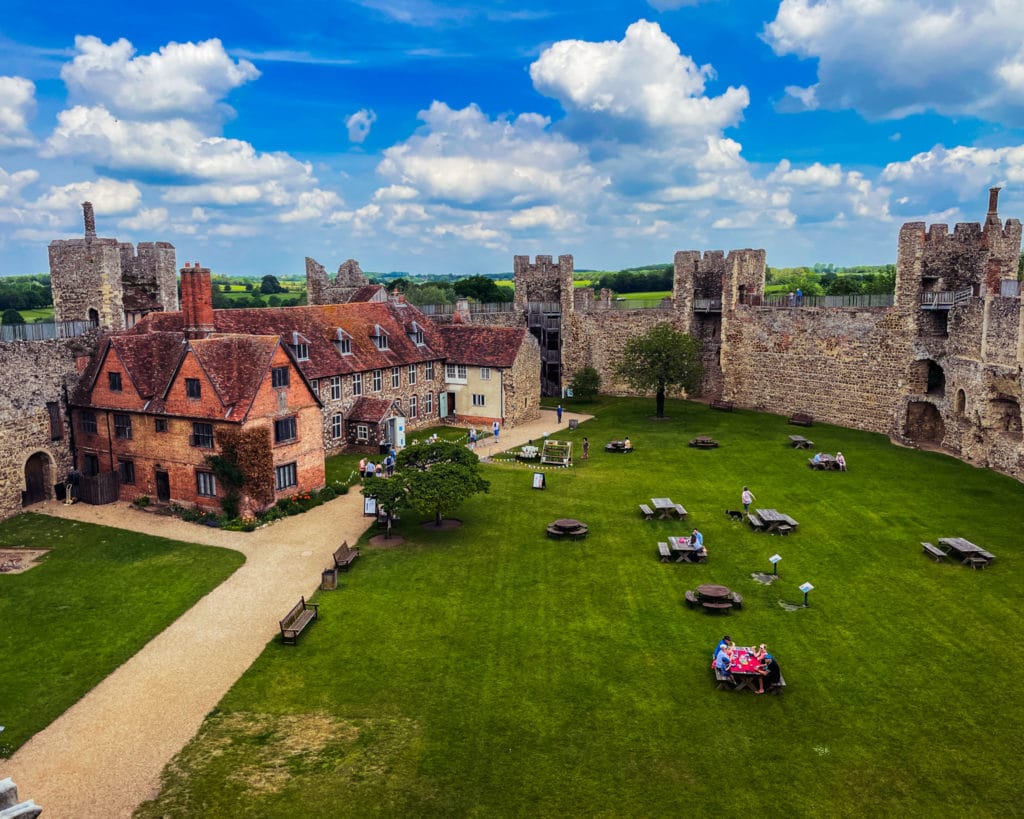
Visitor Information
Framlingham Castle is owned by English Heritage. To find out more about their opening times and special events, click here.
Framlingham Church
If you are visiting Framlingham Castle, then don’t forget to take in the local church of St Michael the Archangel. When Thetford Priory was dismantled following the dissolution of the monasteries, Framlingham Church became the Howard mausoleum. There are some extremely fine and fascinating Tudor tombs to be found there: the 3rd Duke of Norfolk and (probably) his first wife, Anne; Henry Howard and his wife, Francis (de Vere) as well as the tomb of Henry Fitzroy and the fascinating Mary Howard, Duke and Duchess of Richmond. The church is just a stone’s throw from the castle and easy to spot.

Finally, after you have exhausted yourself drinking in all this fabulous Tudor history, there are a number of fine-looking tea rooms and restaurants in the centre of the very attractive village. We stopped off at The Dancing Goat Cafe, which is small but perfectly formed, friendly and with a lovely array of drinks, cakes and sandwiches (and with a decent veggie / vegan choice). On a fine, sunny day, you can sit outside and enjoy watching the world go by. (Postcode:IP13 9BA)
Looking for accommodation? Although an hour’s drive away to the north, if you are looking for an amazing Tudor place to stay, check out my other post on West Stow Hall.

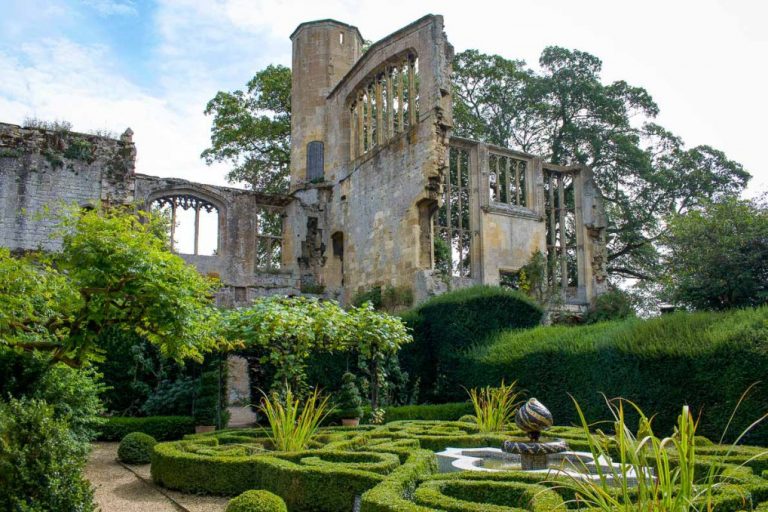
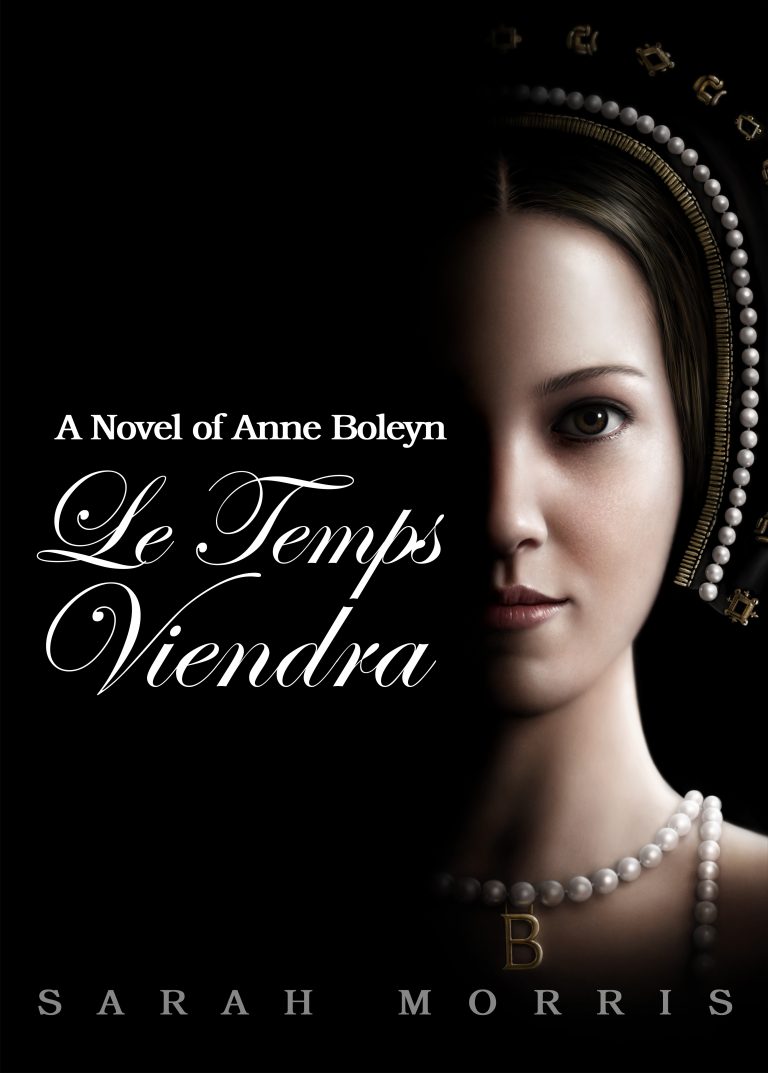
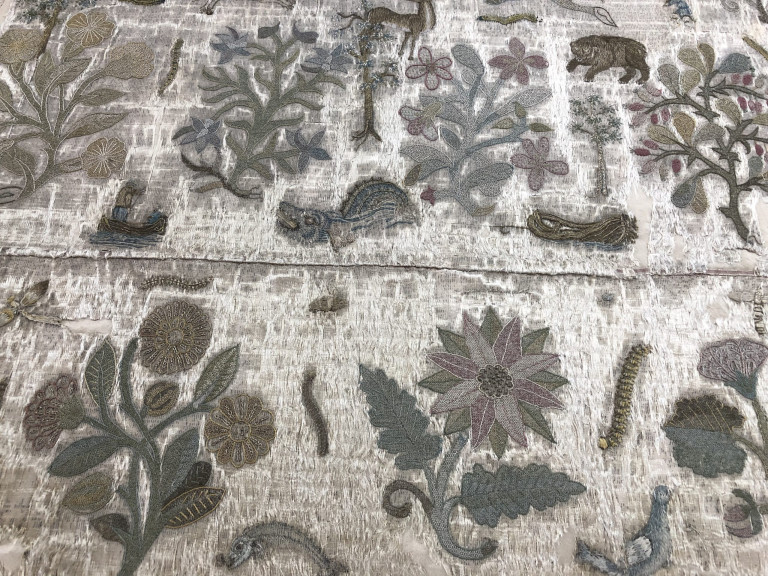
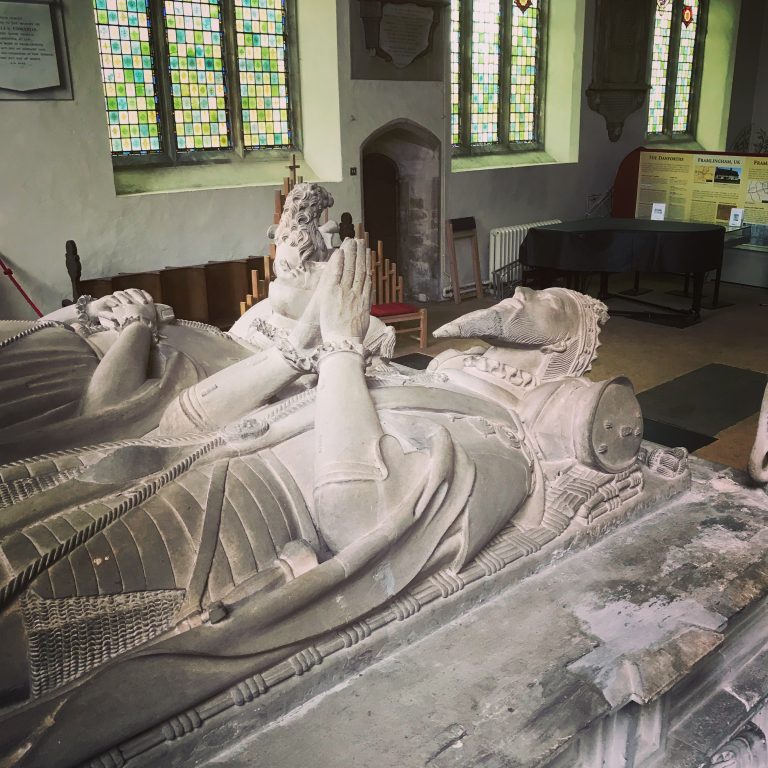

7 Comments